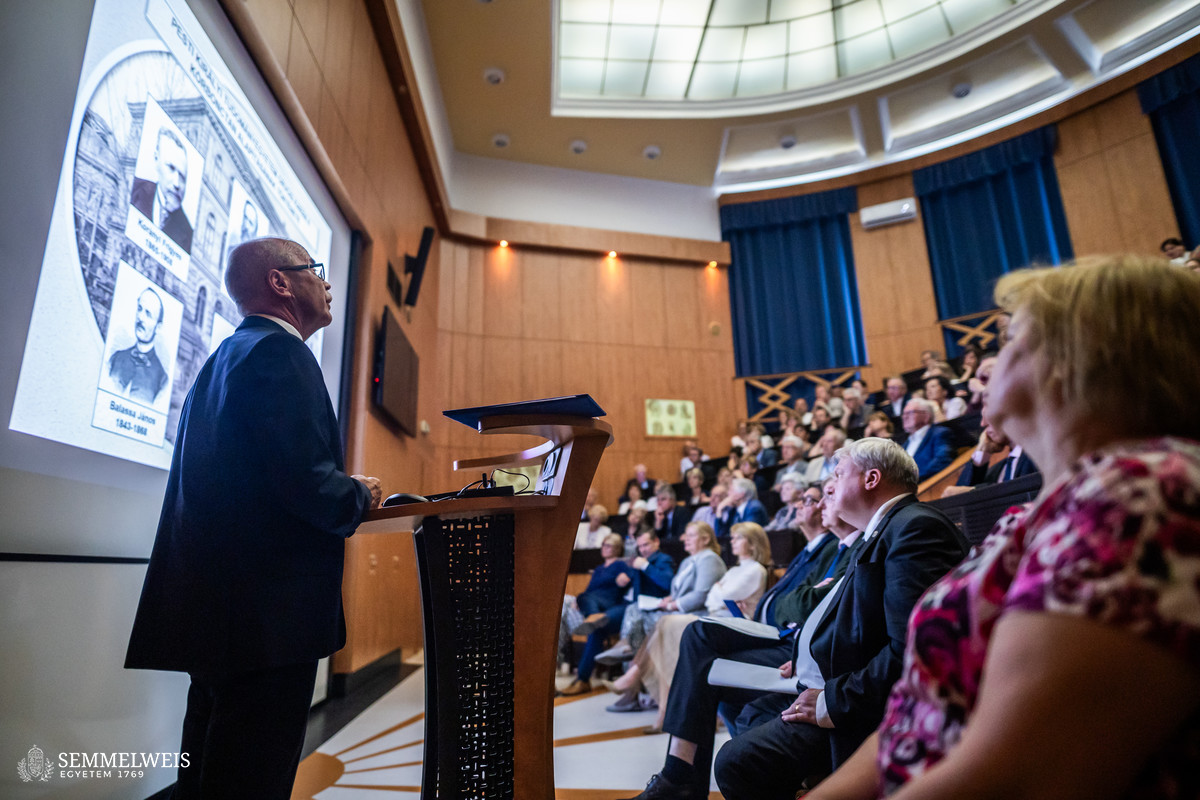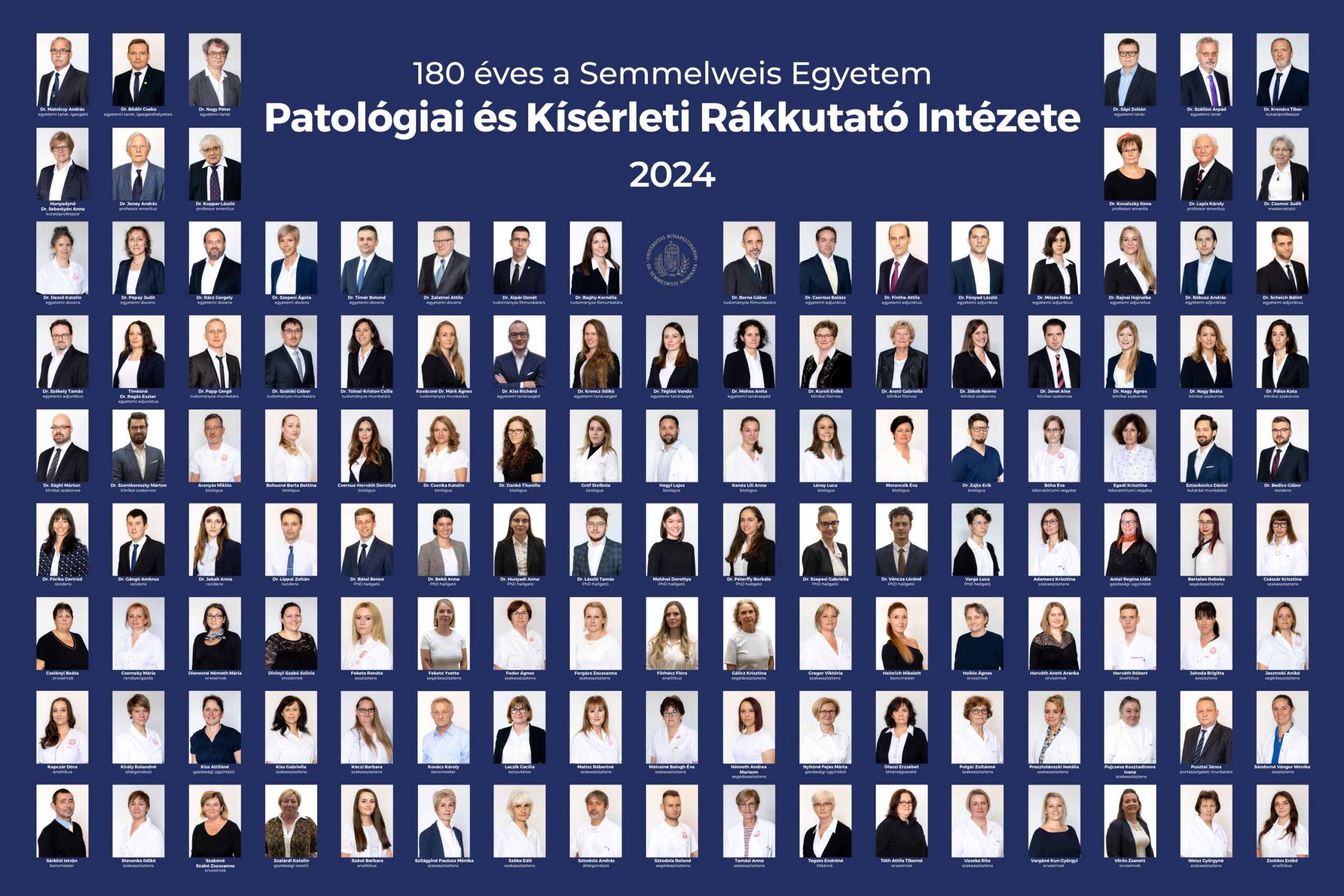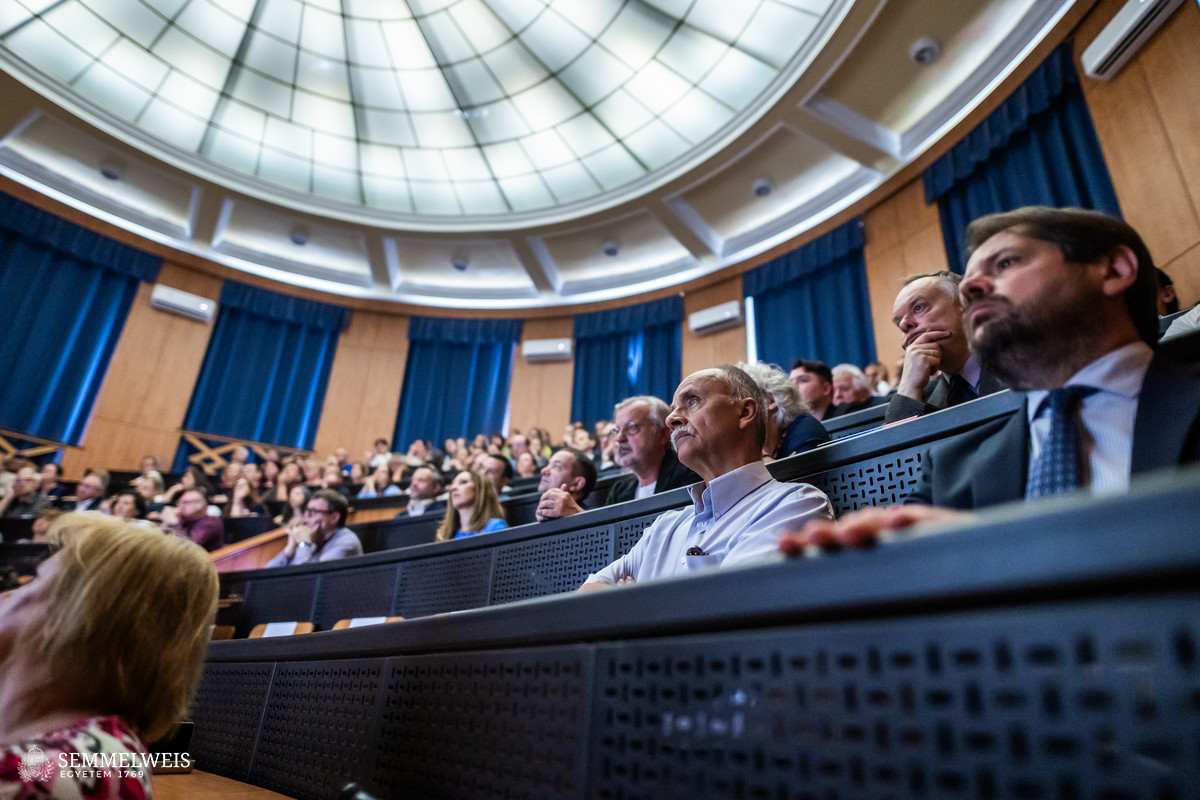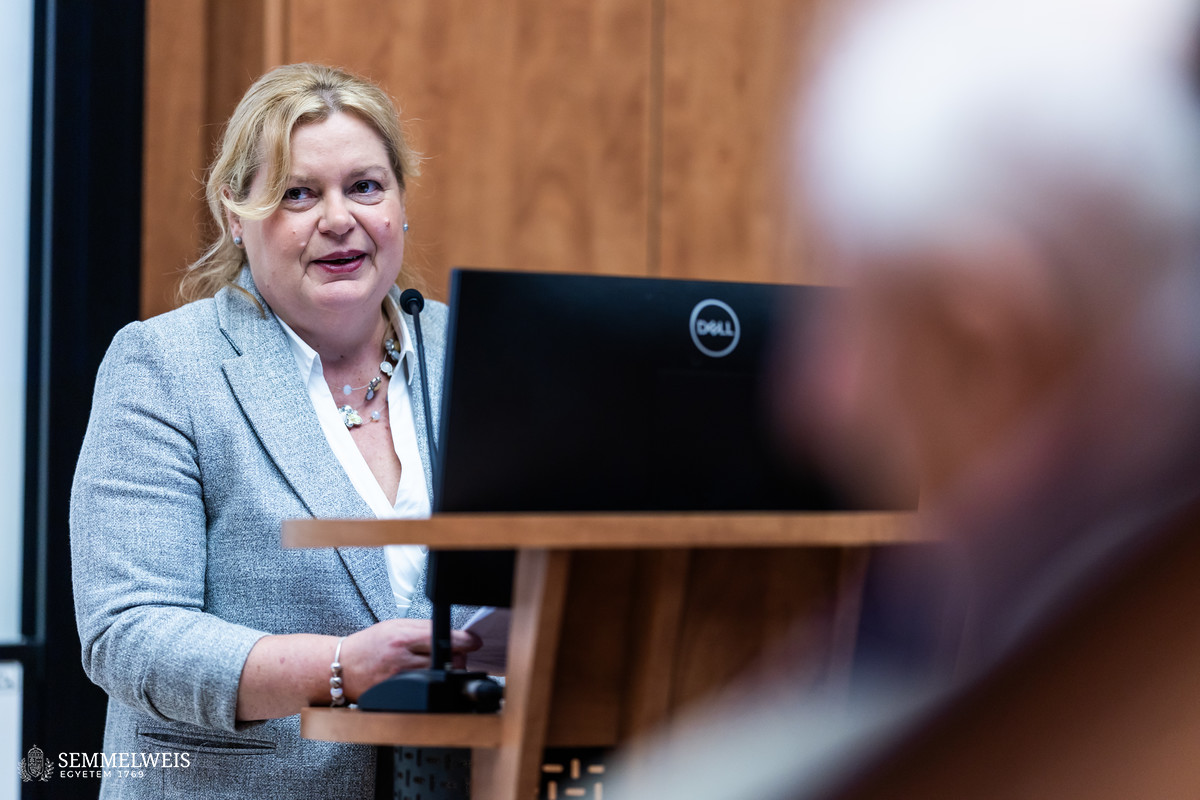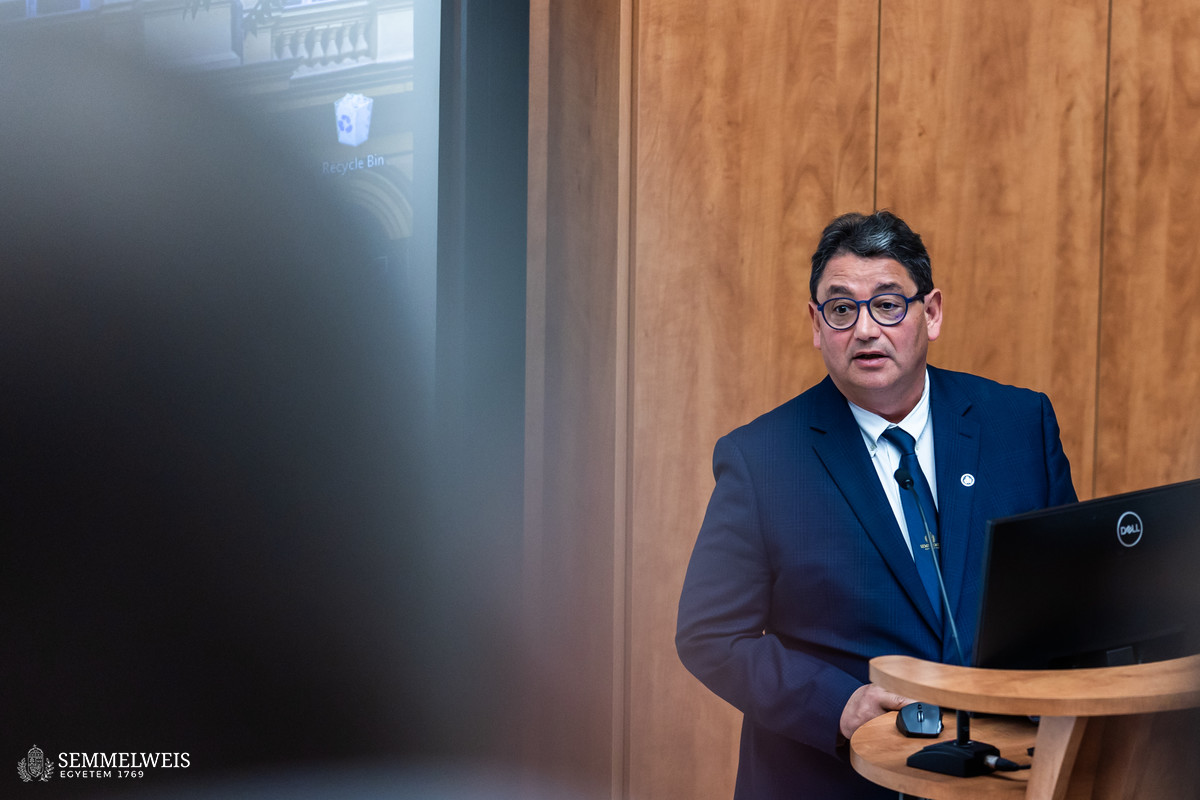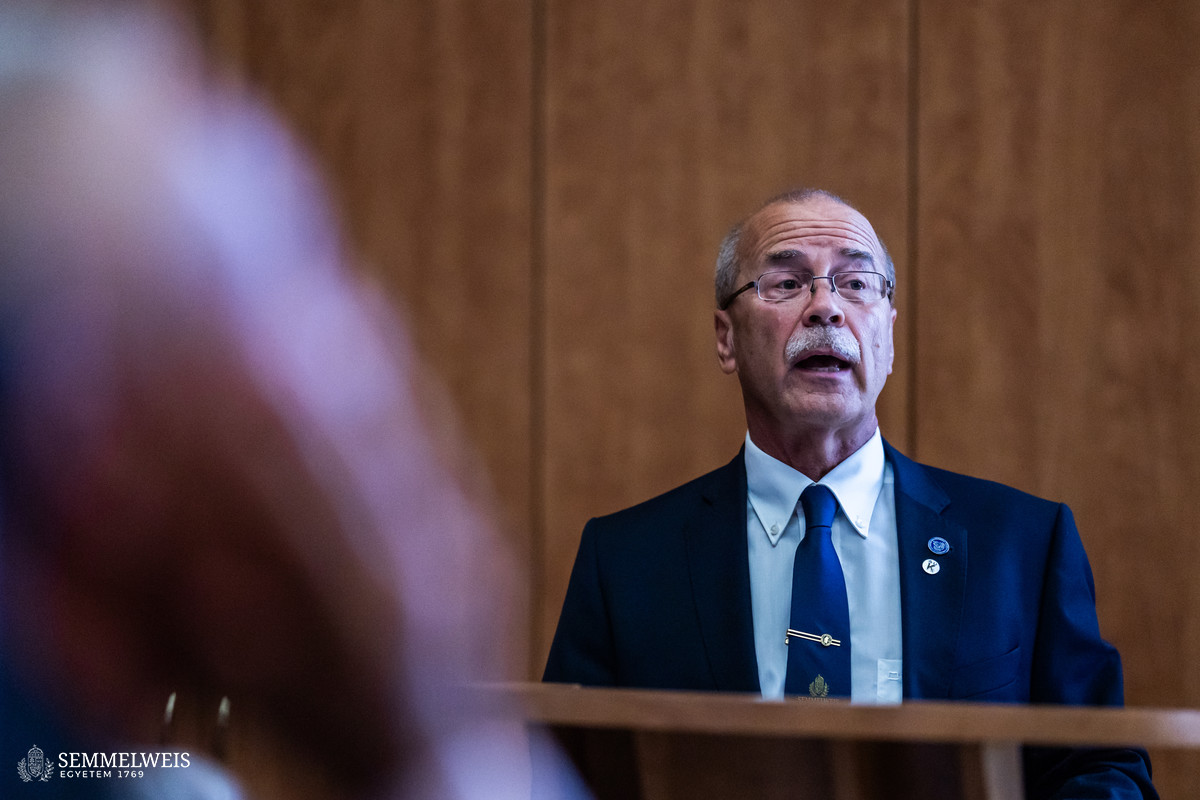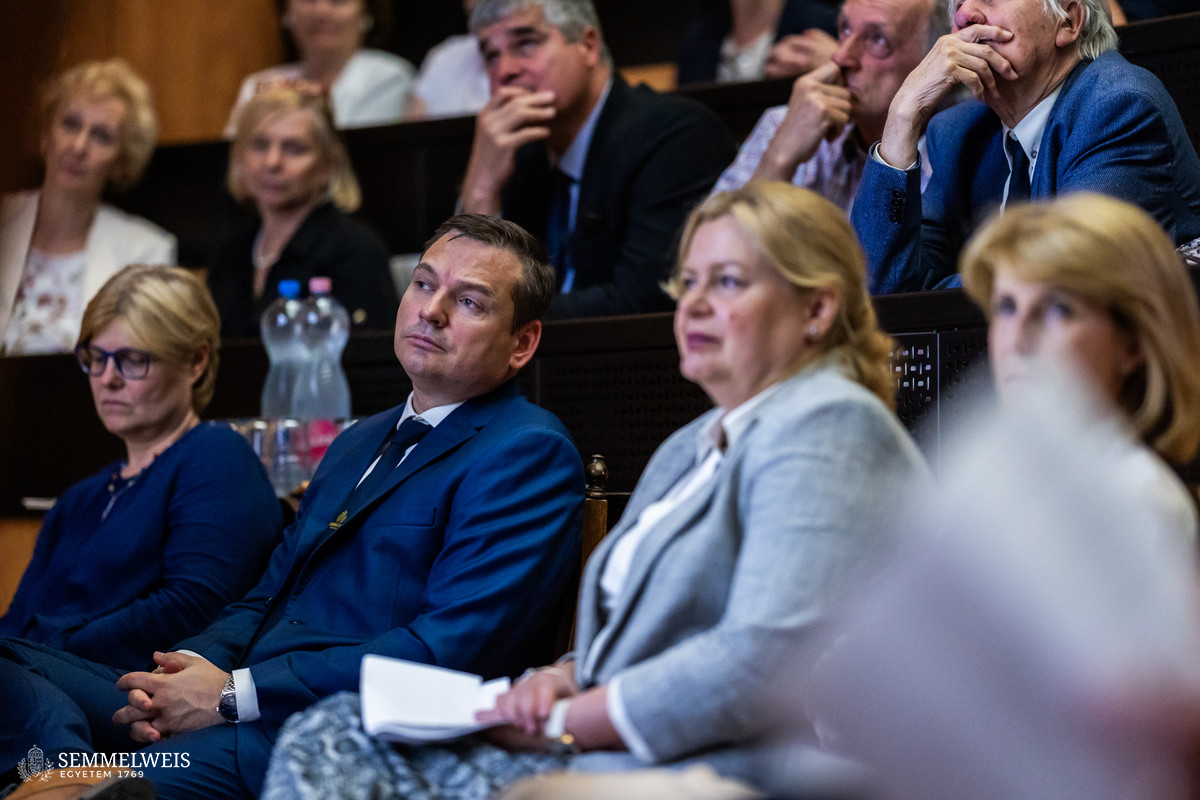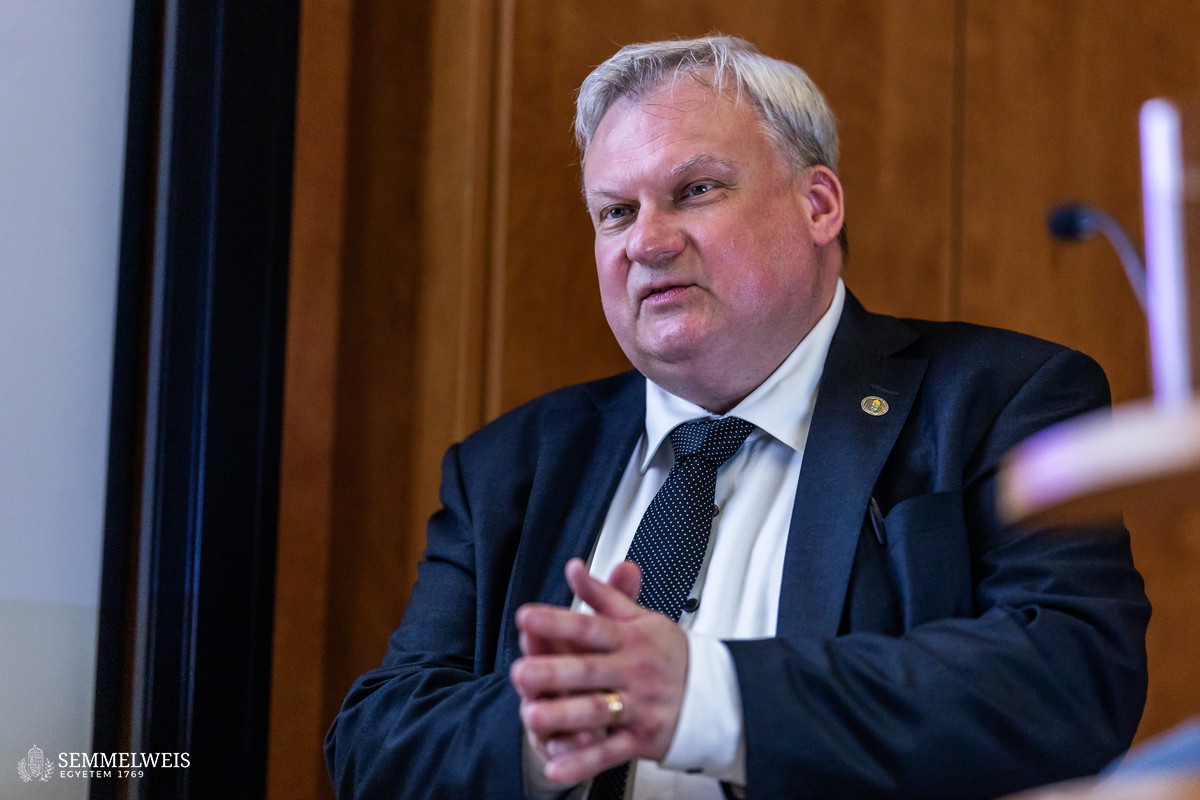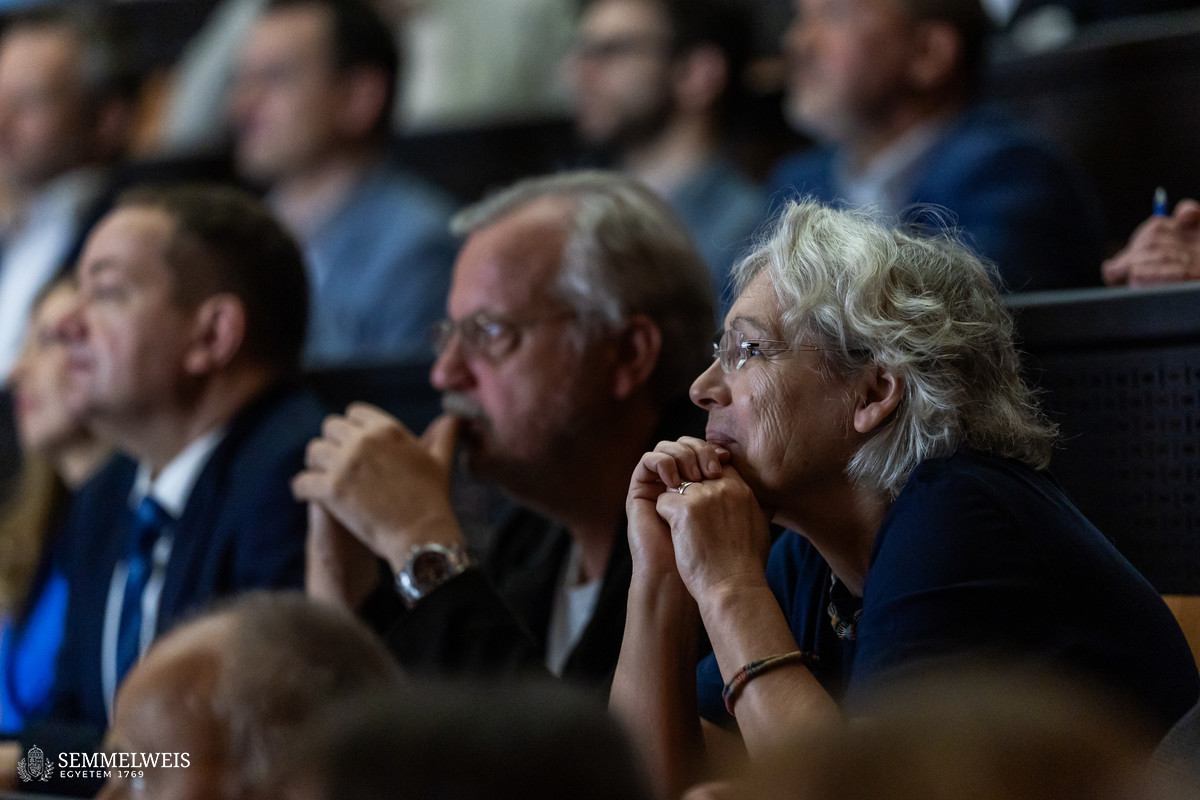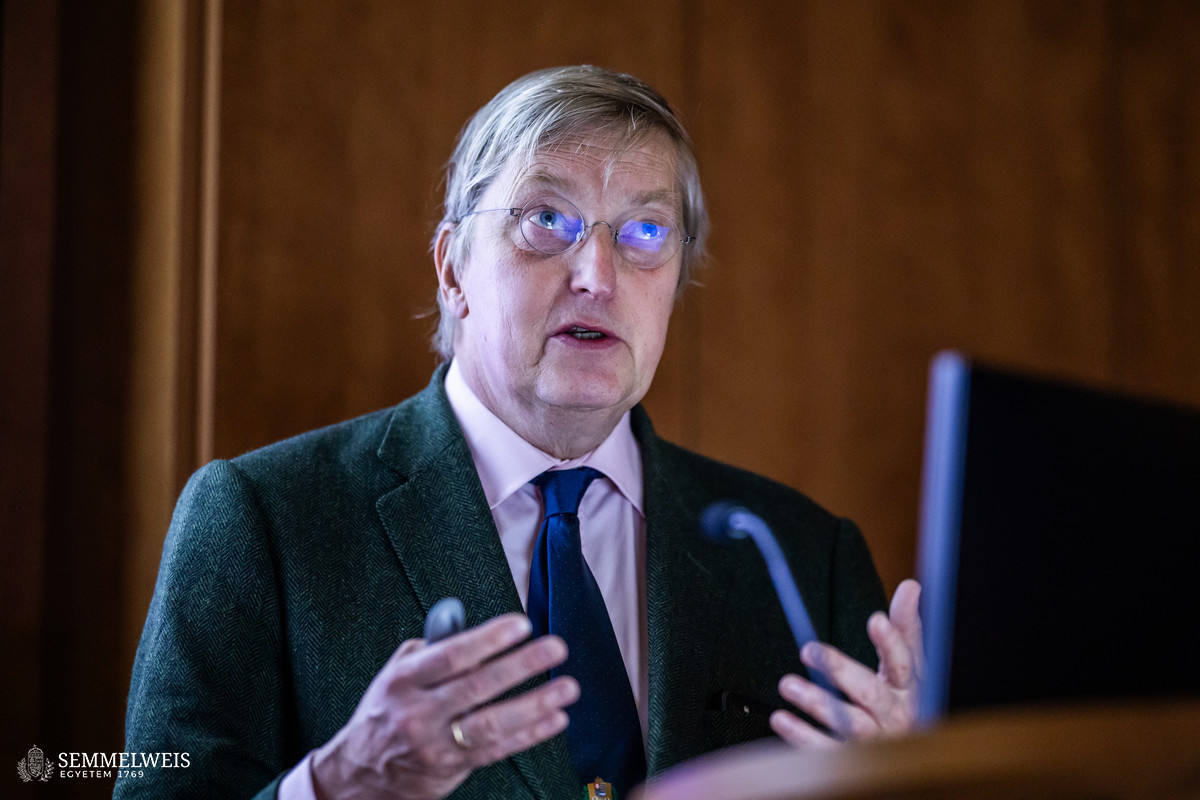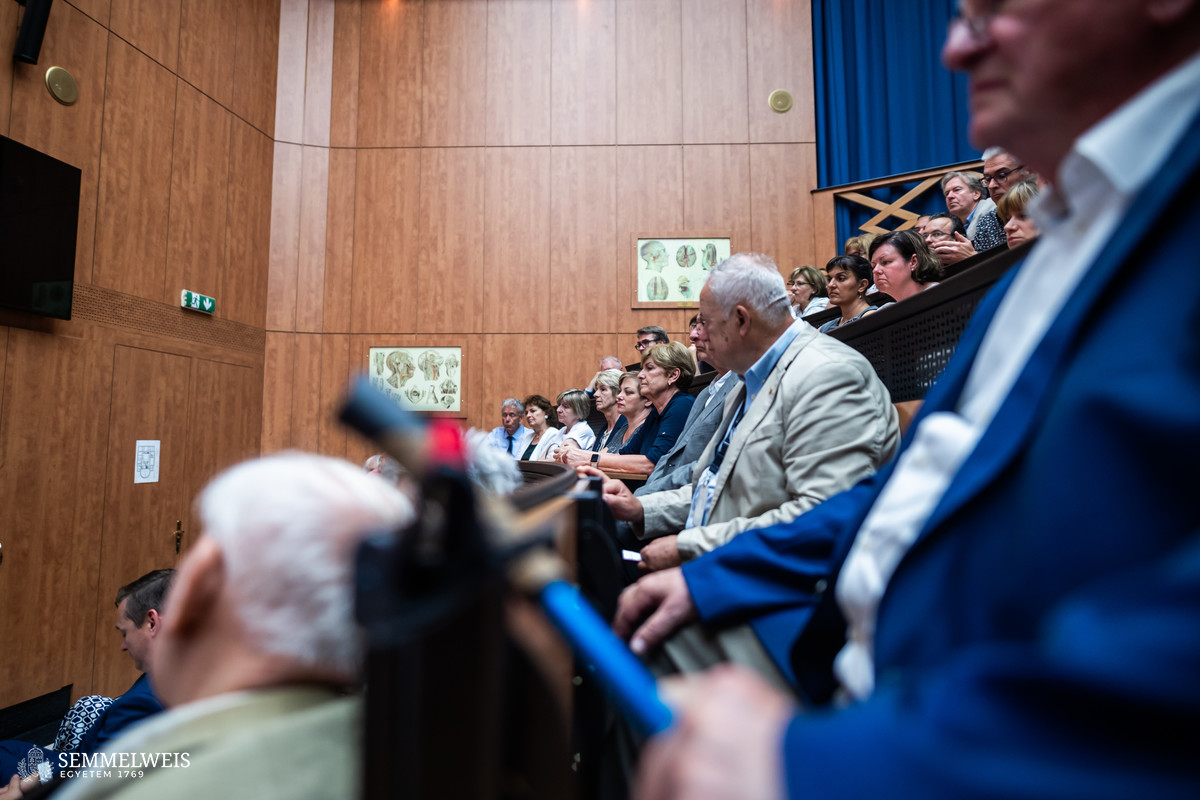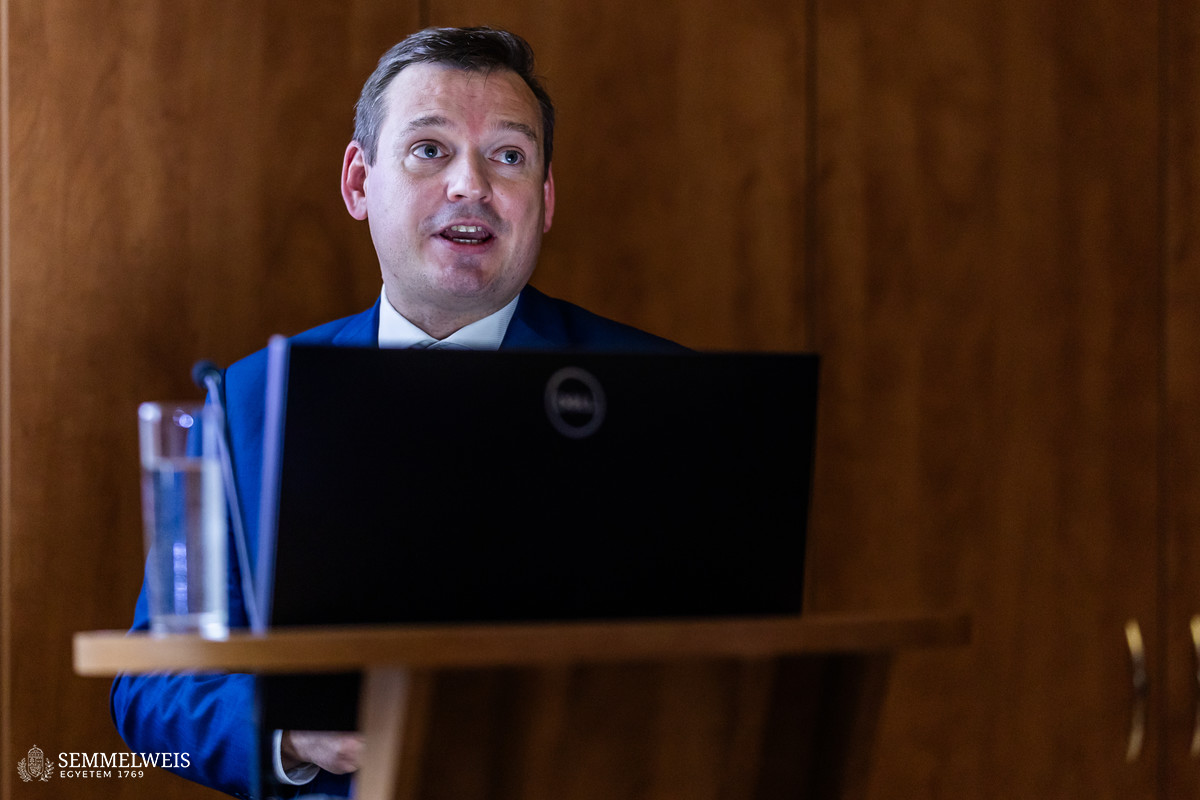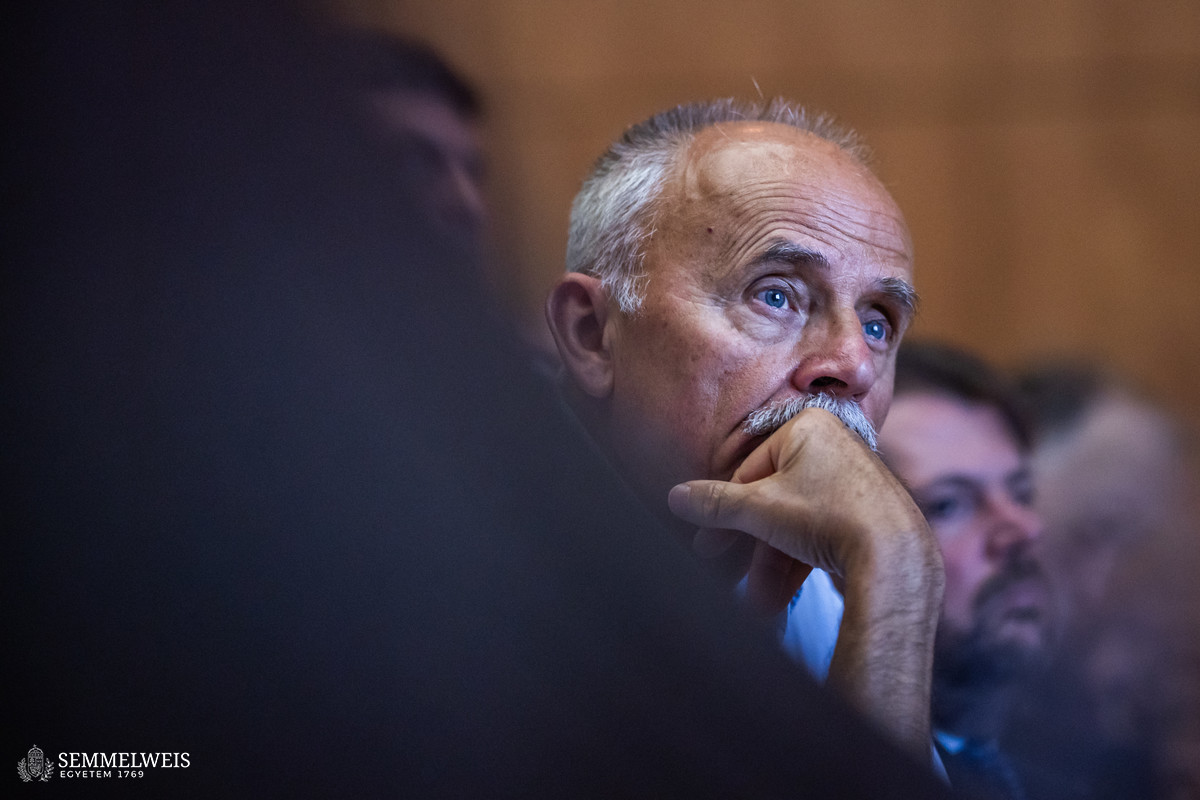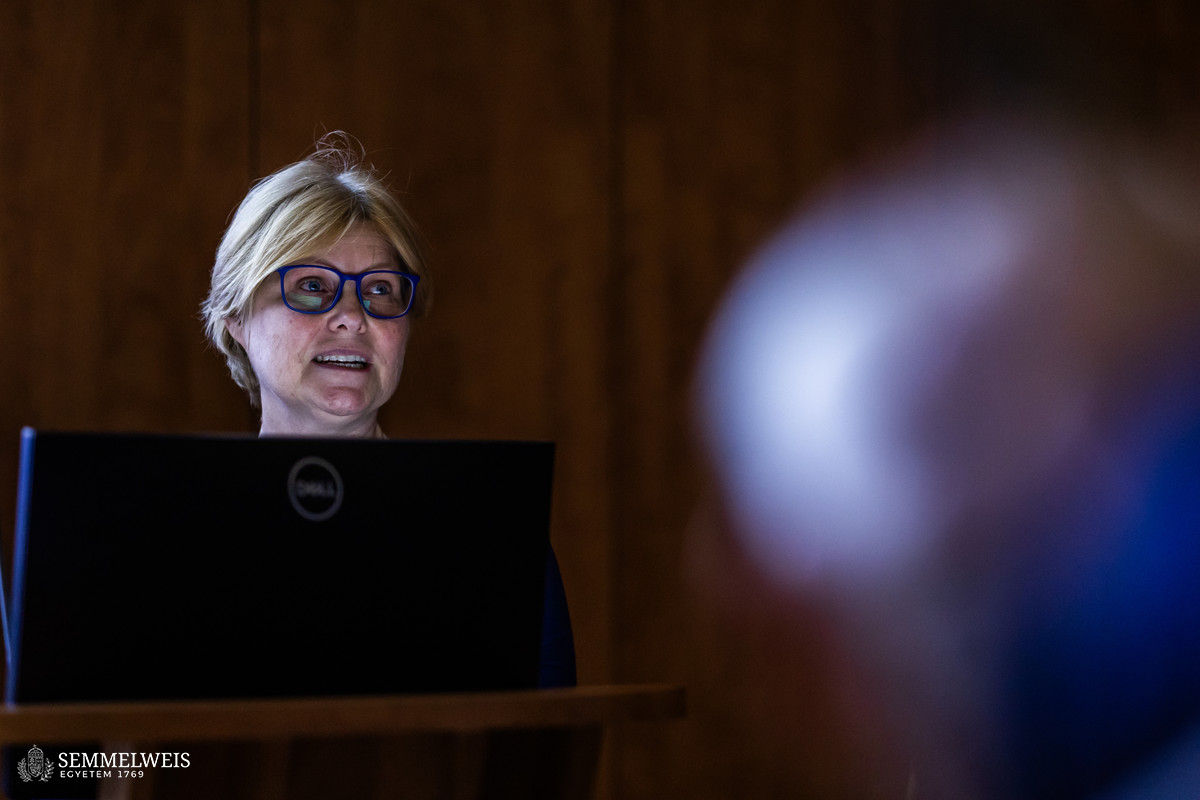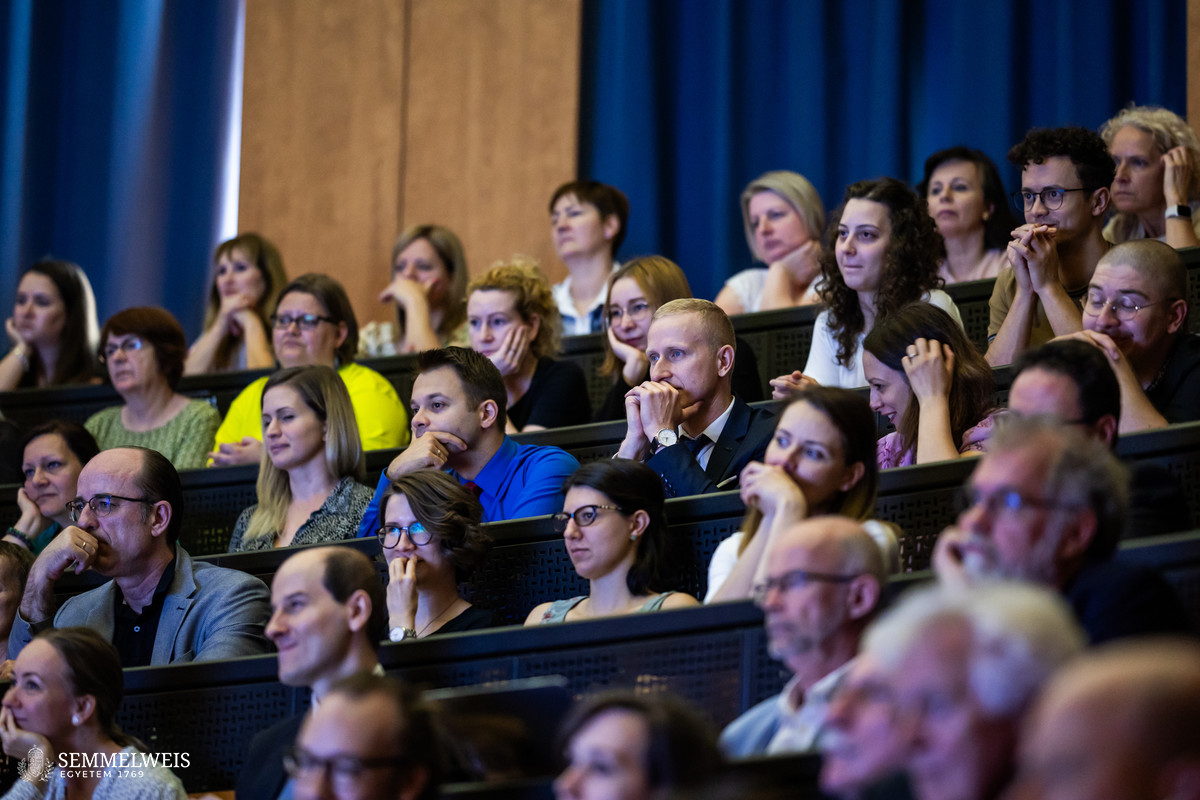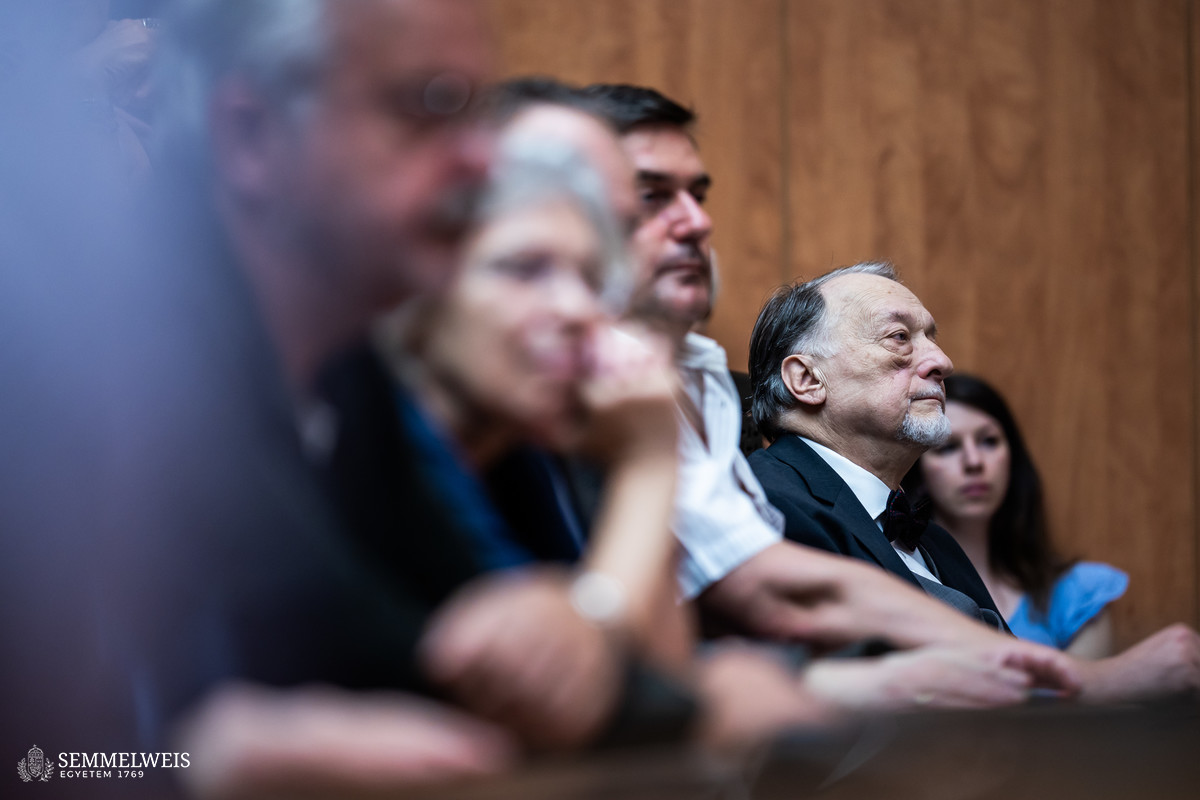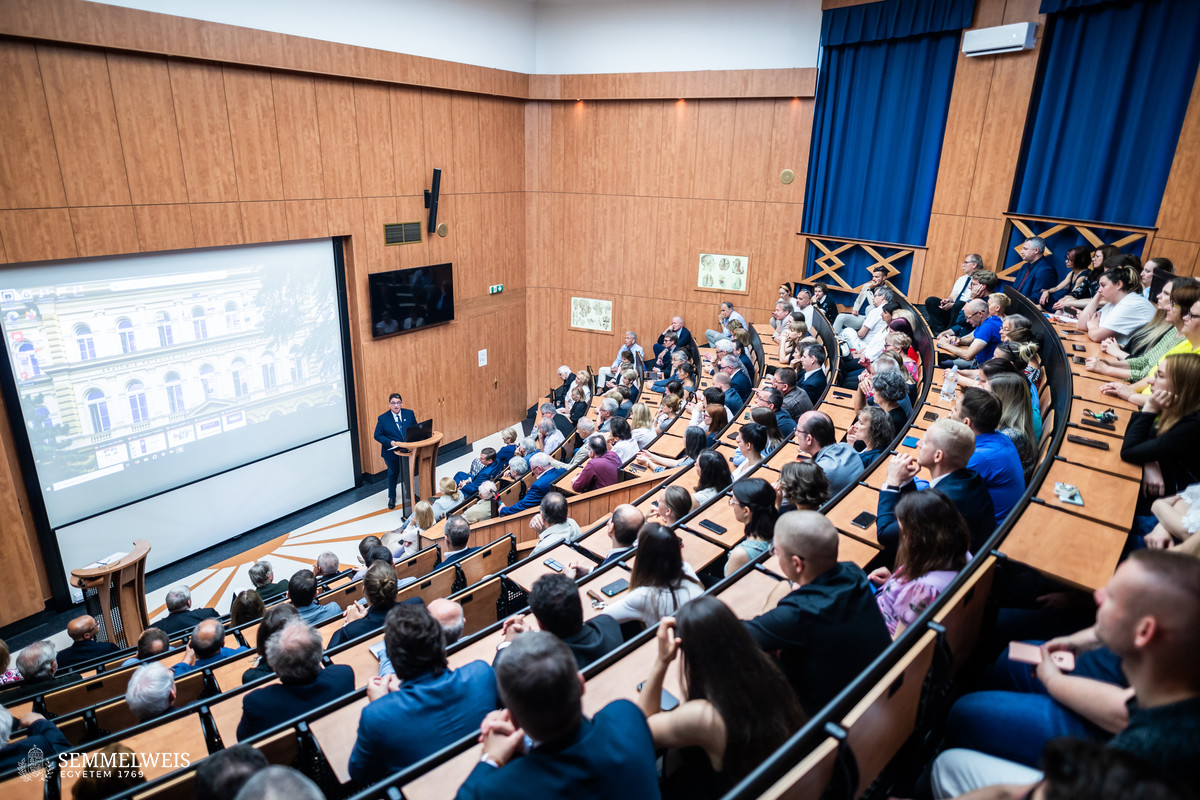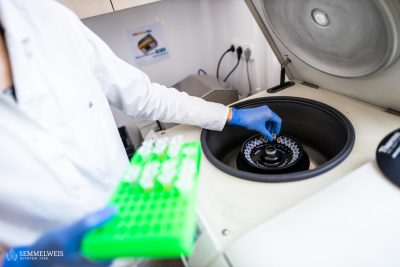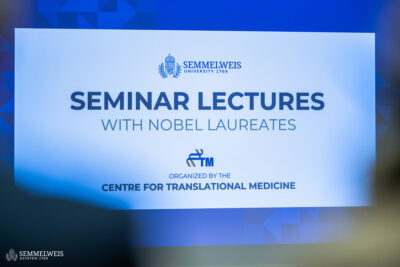“This department was the first institute of pathology not only in Hungary, but in the entire Central European region, and it has played a prominent role ever since, not only in traditional histology, but also in molecular diagnostics, research, and education. The research and education carried out here are of great value to the health sector,” emphasized Dr. Judit Bidló, Deputy State Secretary for the Professional Management of Health at the Ministry of Interior, at the scientific meeting organized to celebrate the 180th anniversary of the Institute of Pathology and Experimental Cancer Research at Semmelweis University.
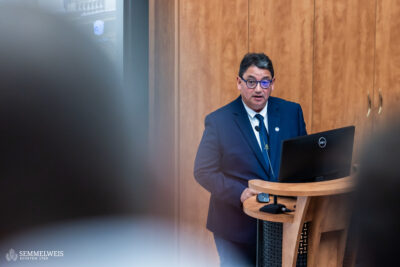 “Lajos Arányi delivered his inaugural lecture on April 10, 1844, thus introducing a new, independent discipline. Now, 180 years later, in the lecture hall bearing his name, we are taking stock of how far pathology has come ever since,” said Rector Dr. Béla Merkely at the opening of the celebratory session, which also marked the start of the commemorative year. He stressed that just as Semmelweis University, with its more than 250 years of history, was able to foster innovation by relying on tradition, the 180-year-old Department of Pathology and Experimental Cancer Research, too, brought together the past, the present, and the future. When the building was inaugurated in 1878, it was the most state-of-the-art anatomy institute in Europe, and today it has become the leading pathology institute in Hungary, constantly enhancing the university’s international reputation. As the rector pointed out, the department was the first in the world to launch digital pathology education in 2007, it plays a pivotal role in national and international oncology research and is at the forefront of classical histology and molecular diagnostics. Dr. Béla Merkely closed his speech by saying:
“Lajos Arányi delivered his inaugural lecture on April 10, 1844, thus introducing a new, independent discipline. Now, 180 years later, in the lecture hall bearing his name, we are taking stock of how far pathology has come ever since,” said Rector Dr. Béla Merkely at the opening of the celebratory session, which also marked the start of the commemorative year. He stressed that just as Semmelweis University, with its more than 250 years of history, was able to foster innovation by relying on tradition, the 180-year-old Department of Pathology and Experimental Cancer Research, too, brought together the past, the present, and the future. When the building was inaugurated in 1878, it was the most state-of-the-art anatomy institute in Europe, and today it has become the leading pathology institute in Hungary, constantly enhancing the university’s international reputation. As the rector pointed out, the department was the first in the world to launch digital pathology education in 2007, it plays a pivotal role in national and international oncology research and is at the forefront of classical histology and molecular diagnostics. Dr. Béla Merkely closed his speech by saying:
I hope that the coming years and decades will bring similar progress to pathology and that you will be able to keep the ’burning light’ of science alive, preserving the legacy of the great predecessors.
In his welcome address, Head of Department Dr. András Matolcsy outlined the early years and development of Hungarian pathology, the history of the institute over the past century, its prominent leaders as well as European and internationally renowned researchers, and highlighted that after the turn of the millennium, the most advanced, new-generation gene sequencing laboratory in Central Europe was established here.
Dr. Pancras Hogendoorn, Professor of Pathology at Leiden University, delivered a lecture on scientific research from a European perspective. The professor recalled the joint projects with Semmelweis University and explained that a paradigm shift was occurring in science, and progress was unstoppable. “Times are changing: Global questions need global answers, all the more so as science now has a global impact on the economy.” He explained that there was an intrinsic medical need for internationalization, which in the field of pathology was manifested in factors such as WHO’s global standard for the classification of diseases, the digitalization of pathology, the increasing identification of rare diseases, genetic heterogeneity, and the evolution of genetic engineering.
Dr. Mikael Björnstedt, Professor of Pathology at Karolinska University, praised the 14-year collaboration between his institute and Semmelweis University. In addition to acknowledging the organizational cooperation, joint methodological developments, educational exchange programs, joint courses, as well as clinical research and translational projects existing between the two institutions, the professor highlighted that Dr. András Matolcsy had been a visiting professor at Karolinska University for many years, and Mikael Björnstedt himself was awarded an honorary doctorate by Semmelweis University in 2017. As far as the future of pathology is concerned, he believed that in addition to genomics, transcriptomics and proteomics should also receive emphasis and that precision pathology had a great future, especially through AI-assisted image analysis.
In his presentation, Dr. Csaba Bödör, Professor of the Institute, presented the successes achieved in the fields of molecular oncohematology, molecular oncology, and cardiogenetics, and outlined the established diagnostic programs.
He also mentioned a EUR 150,000 industrial collaboration to sequence the whole genome of 200 patients with the aim of identifying the differences that may lead to certain cardiogenetic conditions.
It has been 90 years since the establishment of the experimental cancer research department of the Budapest Institute of Pathology in 1934, Dr. Anna Sebestyén, Senior Research Fellow of the department, pointed out. She described the role of the department’s former outstanding researchers in the development of cancer research both at a national and international level. State-of-the-art technology, around 250 human tumor cell lines, and 3D live-cell modeling are available for studying solid tumors and rare cancers.
In the second session, presentations were given on the details of the curricular reform in pathology education, the activities of the National Center for Hematopathology, the flow cytometric diagnostic and research activities, as well as the most important milestones in the overall digitization process at the institution. In addition, participants had the opportunity to gain an insight into the digitized day-to-day life of the institution.
Melinda Katalin Kiss
Translation: Judit Szabados-Dőtsch
Photos by Bálint Barta – Semmelweis University
